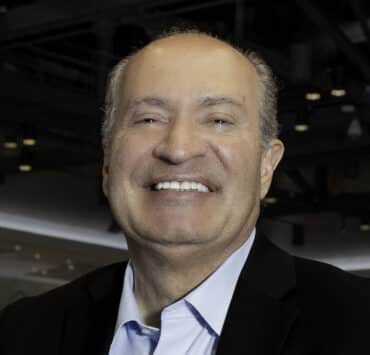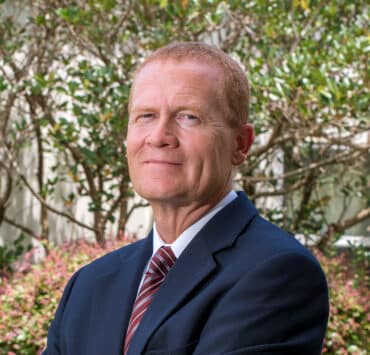|
Getting your Trinity Audio player ready...
|
Emily Benedict exists in a living, breathing, ever-evolving cultural institution. As associate vice president of capital programs at Chicago’s beloved Art Institute, Benedict is tasked with not only maintaining but growing one of the world’s most renowned centers of art and education.
From the first original building constructed in 1893 to its expansion over the rail lines of the Second City, Benedict must manage near-constant construction, rehabilitation, and growth plans of the Art Institute of Chicago while ensuring priceless art is left unharmed. She also ensures that the public can encounter some of the world’s greatest works unimpeded by noise or detour (or as little as possible).
Benedict has been with the Art Institute since July 2018 and she uniquely manages these efforts without aid of either a builder’s or curator’s background. She may have spent 10 years in museum settings, but Benedict has learned by being on the job, asking questions, and developing invaluable relationships in a space that can often be unwelcoming to women. The AVP turned what may seem like a career stumbling block into something far more interesting and successful.

“The most interesting part of this job is straddling these two worlds that are so different,” says Benedict of the museum and building worlds. “It’s my job to figure out how to bring them together. It’s very empowering and, honestly, a little addicting once you start to find some success. Whether that’s a completed build or a beautiful gallery project, all of the trials and tribulations sort of fade away once you get to see something accomplished.”
Benedict’s original interview was postponed due to one of the most pressing and complex projects she’s faced yet. The Art Institute’s original building is bookended by two massive loggias that overlook its south and north gardens. While the public is no longer allowed on the 125-year-old limestone structures, great care has to be taken to ensure the integrity of the building. That’s where it gets interesting.
“Limestone absorbs moisture, and when the steel framing of the building also starts to take on water, they inevitably erode,” Benedict explains. “We have some 125-year-old steel beams that are integral parts of the loggias’ support. They’re eroding, and we need to come up with a solution to either replace them [or] strengthen them and ensure that they will continue to be structurally sound.”
“You’ll eventually become sort of indispensable even though you may not be an expert in every area. I’m not a seasoned curator or a professional construction manager, but I’m in a position where I can learn a tremendous amount from each side of the process.”
Emily Benedict
It’s not like rehabbing a 50-year-old skyscraper where all materials and building codes have been accounted for and adhered to, the AVP explains. No one really knows how much waterproofing was done during the build. Benedict and her team must put in incredible amounts of homework before they can even assess what the potential problem might be. Did a tar truck not show up on an important day a century ago? Did integral structural processes get overlooked by a team working too quickly?
“It’s an incredible collaborative effort between our own building team, our structural engineers, and our contractors who find this work really interesting and historically relevant,” she reflects. “We have to perform surgery on the building in order to fix a structural problem without disrupting everything that’s going on around us.”
Given the amount of relationship-building and partners Benedict works with, it’s important to note just how far she has come in mitigating the challenges of being in a space that’s often dominated by men. And while Benedict has had to occasionally endure the inappropriate comment or underestimation of her capabilities, she’s also managed to move past them and flourish.
“Whether that’s a completed build or a beautiful gallery project, all of the trials and tribulations sort of fade away once you get to see something accomplished.”
Emily Benedict
Benedict’s challenge was compounded by her nontraditional background. She had to learn by doing, and that meant asking a massive number of questions. Early on, being a young woman asking questions to a room full of men can be loaded with assumptions as to her capabilities and knowledge, but, fortunately, she did what she needed to learn and grow into increasingly more complex roles.
“If you’re a project-minded person, you really love the energy of learning and finding out answers to questions,” she says. “You’ll eventually become sort of indispensable even though you may not be an expert in every area. I’m not a seasoned curator or a professional construction manager, but I’m in a position where I can learn a tremendous amount from each side of the process. You just have to keep asking questions.”
McGuire Engineers is an experienced team of dedicated individuals who partner with our clients in developing their building engineering systems with efficient, economic, and innovative solutions.
We have been partnering with the Art Institute of Chicago for over 20 years, and together, have improved the performance of the museum while saving energy and costs. We are proud to support Emily Benedict and the Museum in the planning and design of their exciting new development project.
Since 1990, Pepper Construction has completed more than 150 projects for the Art Institute of Chicago, spanning everything from gallery renovations, retail, mechanical upgrades, exterior façade restoration and staff offices renovations, while preserving priceless artwork and maintaining the visitor experience. One of the nation’s top 10 museum contractors, Pepper represents some of the most advanced thought leadership in our industry—investigating new technologies, evaluating new methodologies and integrating innovative solutions in the field.
Turner is pleased to have worked with Emily Benedict and the Art Institute of Chicago over several years, and we proudly join in celebrating Emily and her career! Since 1924, Turner has operated in Chicago demonstrating a depth of expertise and exceptional construction services on iconic projects that are an integral part of the fabric of the city.


